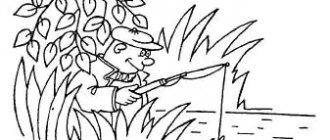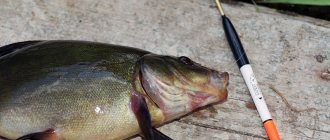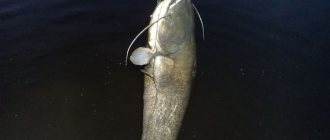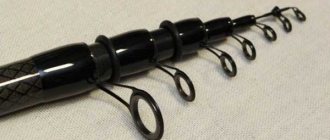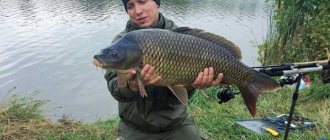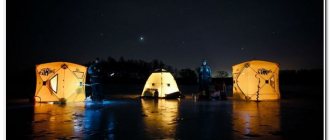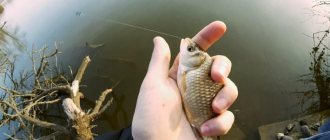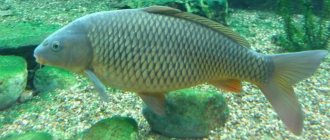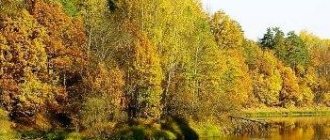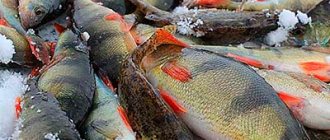Features of carp fishing at night
Night carp fishing has a number of advantages over fishing during daylight hours:
- On many reservoirs, during the swimming period, it becomes noisy during the day due to vacationers and swimmers. At the same time, the cautious carp refuses to feed during daylight hours. Night in this case remains the only time when it is possible to catch carp, especially trophy specimens with a small concentration in the pond.
- At night, the carp is more active, since it is not frightened by extraneous noises ; it comes closer to the shore, actively combing the reservoir in search of food.
- In the dark, carp look for food, relying only on their sense of smell . At the same time, he will not be alarmed by the fishing line and other visible parts of the tackle.
However, carp fishing at night is complicated by some inconveniences:
- Limited visibility. In the dark it is more difficult to make an accurate cast, as well as to bring out large specimens of carp.
- Additional equipment and equipment required
- At night, mosquitoes are very annoying near the water .
- It is necessary to prepare the fishing site in advance - as a result, night fishing requires a significant investment of time.
Night spinners
From my point of view, carp is one of the most controversial fish. Finding the way to “his heart” is not easy. Sometimes you know that he is standing under your nose, but it is not clear from which side to approach him in order to persuade him.
Despite the fact that carp is particularly unpretentious to its habitat, it still loves comfort. Oxbow lakes, reaches, bays - these are the places where it inhabits lakes and rivers with a slow flow. He likes pits with reverse flows and trash bottoms, as well as places with sharp changes in depth. In ponds he likes dense thickets of reeds and water lilies.
The main feeding time for carp, regardless of the nature of the reservoir, is night and early morning. Like bream, at night carp emerge from their daytime shaded shelters, where they hide from irritating bright light, and go in search of food, guided mainly by touch and smell. It moves to shallow places, often lined with silt and overgrown with all kinds of greenery.
All of these listed observations allow us to conclude that carp can be “caught” not only at a distance from the shore using bottom equipment, but also near the coastal edge, where the queen of fishing is the fishing rod. Moreover, I have been convinced more than once that fishing just a few meters from the shore can be many times more effective than fishing at a considerable distance.
In this regard, this example is illustrative. Two of my friends were fishing at one of the carp reservoirs at night.
They cast the rigs a meter or two from the shore. In an hour and a half, a large fish tank was filled to capacity.
They began to pull the catch out of the water onto the shore and the fish tank could not stand it. The mesh turned out to be not designed for a weight of several tens of kilograms.
Almost all the carp went back to their native element. After the loss, the guys, although upset, did not despair.

They got down to business again, and by dawn the losses had been restored.
In general, on reservoirs dominated by small carp (up to two to three kilograms), I have repeatedly experimented with casting ranges and types of equipment. It often turned out that the float equipment, abandoned two to five meters from the water's edge at a depth of one and a half meters, turned out to be out of competition. Moreover, the minimum casting distance I noticed was only one meter.
To minimize the inevitable noise emanating from one’s own actions on the shore, casting was always performed from the side, moving the float’s landing point away from oneself a few meters to the right or to the left. I do not rule out that the key to success with such a scheme is a combination of conditions, such as the weather, the choice of a specific fishing location, the “correct” feeding and bait.
But the determination of the fish horizon cannot be discounted. And you shouldn’t be embarrassed by this seemingly “childish” casting distance and “comic” depth. They are sometimes the very fishing horizon that will allow you to experience all the delights of carp fishing “from dusk to dawn.”
The bait is supplied exactly to the bottom. The carp needs to create conditions so that it independently collects nutritional ingredients.
Therefore, all grains must be at the bottom, including those placed on the equipment in a chain. It’s extremely rare that I’ve caught carp at night at a higher “level.”
Knowing the nature of the fish, in case of a long lull when fishing on a feeding spot, I resort to a proven technique.
However, all this is in vain, because at night the fisherman has a chance not only to enjoy the fight with a particularly large trophy, but also to fill the fishnet with tails. I will try to explain in detail why.
There are two things that we do not need during the day, but which are in great demand at night. This is warmth and light.
Cloth
In the temperate zone, even in summer the nights can be cool. Only a sudden warm atmospheric front, or a prolonged abnormal heat wave that lasted at least two to three weeks, can give us several warm nights. But more often it happens that the thermometer, which stormed the 40-degree mark during the day, drops below ten degrees in the morning.
The coolness of the night is felt especially strongly near bodies of water - in a humid atmosphere. The dew that falls abundantly on the banks only contributes to this.
Theoretically, you can fish at night using any daytime gear, but in practice, with some of them this task becomes much more complicated. To make it easier to solve, various tricks and technical devices are used, mainly aimed at ensuring proper bite signaling. Perhaps they are worth considering first.
"Fireflies"
This is the name given to the elements of equipment that emit light. They are attached to floats, rod tips and bells - both temporarily and permanently, and can be chemical, electronic or phosphorescent.
The peculiarity of carp fishing is that it is carried out around the clock. Often, carp are caught much better at night than during the day, and the likelihood of catching trophy specimens at a time when everything calms down and calms down increases significantly. Therefore, night fishing is an important part of carp fishing.
At the same time, catching carp at night greatly complicates the usual actions of the fisherman. which in daylight are carried out automatically and do not cause difficulties. To reduce the difficulties created by darkness to a minimum, it is necessary to properly prepare for night fishing.
Camp preparation
First of all, you need to carefully consider your routes of movement during night fishing and ensure that there are no obstacles on the way from the tent to the rods, from the rods to the place where you intend to fish, from this place to the carp mat, from the stand with the rods to the mounting table, on which you have to change leashes, attachments, etc.
This is a very important element of preparation for night carp fishing, since the adrenaline bubbling in the blood after a night awakening, combined with dull reflexes after a sudden awakening and darkness, can do a bad job.
With a very high degree of probability, you simply will not notice the obstacle when running out of the tent to the rod-pod or carrying the trophy, which after a long struggle finally found itself in the landing net, to the carp mat, which can lead to quite serious injury, breakdown of expensive gear and other troubles, capable of hopelessly ruining fishing.
At night, it is especially important that any equipment that may be required during the fishing process is located in strictly designated places. This will help, firstly, to quickly find the right thing, and secondly, to avoid breakage, for example, of an expensive carbon cobra, which will certainly happen if you step on it in the dark.
Camp lighting
The success of carp fishing at night largely depends on the correct organization of lighting in key areas of the camp. Sometimes the timely execution of certain actions determines whether the treasured trophy ends up on the carp mat or floats past the fishing zone with impunity.
You can significantly simplify movement around the camp area at night by placing flashlights at key points. In the garden departments of construction supermarkets, sets of such flashlights cost pennies.
To facilitate the performance of various actions carried out inside the shelter (in a tent or marquee), it is advisable to organize lighting for the inside of the shelter. The easiest way to do this is with the help of special lamps, which are suspended at the top of the shelter using hooks or magnetic fasteners.
It is very convenient if such a lamp automatically turns on after a bite and is controlled using a remote control.
Using special lamps on clothespins, you can organize additional local lighting of the mounting table.
Custom lighting fixtures
One of the most important pieces of equipment for night fishing is personal flashlights that leave your hands free. Such devices are attached either directly to the head using an elastic band (headlamps) or to the visor of a baseball cap (using plastic clips)
Models for baseball caps are very light, but since, with rare exceptions, they are powered by very compact batteries, they do not work for long from one set. Besides, on a cold night wearing a baseball cap doesn’t feel entirely comfortable.
Headlamps are structurally monoblock and double-block. For two-block models, the batteries are placed in a separate block, which is mounted on the back of the head.
It is very comfortable to walk in such a flashlight, since its mass is symmetrically distributed on the head. But these flashlights are not very suitable for the specific conditions of carp fishing.
Firstly, sitting in a chair with a high back, when you try to tilt your head back, the battery pack puts very unpleasant pressure on the back of your head. Secondly, while waiting for a bite, you often have to sleep without taking off the flashlight; in this case, the block attached to the back of the head makes it difficult to sleep on your back.
Therefore, the best choice, in my opinion, is a lightweight monoblock headlamp.
Carp, seeing the light of a lantern, often, with the last of their strength, makes several desperate attempts to free itself from the hook, which often leads to disappearances at the landing net itself. To avoid this, at the final stage of fishing, it is better to use a flashlight with a red light; in this case, the carp behaves much calmer.
Especially convenient are flashlights in which the red light is turned on not by pressing a button multiple times, but by using a quickly lowered filter. If you are not used to sleeping with a flashlight, keep it in a special organizer that is attached to the frame of the folding bed, then the flashlight will always be at hand, and you will not accidentally step on it.
The main advantage of night fishing is that at this time of day, carp, especially large ones, feed more boldly than during the day, and often come closer to the shore. There are frequent cases of catching night trophies just a few tens of meters from the shore. Therefore, at night it is imperative to maintain silence and try not to shine flashlights on the water unless absolutely necessary.
For night fishing, you can prepare in advance a special point located in a promising place in the coastal zone (both from your own and from the opposite bank). You should feed the night fishing zone using such noisy means of delivering bait as balls and rockets in advance, so as not to disturb the night rest of the pond.
In the dark, it is better to feed using such almost silent means as a cobra tube and a slingshot (if the use of the latter allows the fishing distance).
It should be borne in mind that the preferences of fish can change dramatically during the day. This is partly due to changes in the activity of carp digestive enzymes.
At some times of the day, enzymes that break down proteins are more active, and at others, they break down carbohydrates. In addition, bloodworms and other organisms that form the basis of the natural diet of carp are also subject to daily rhythms, which also affects the nutrition of the fish.
Therefore, an attachment that worked perfectly during the day may completely lose its effectiveness at night. If this happens, try changing the bait to the opposite one (sweet to fish, and vice versa).
Fishing for carp at night can be very exciting and, with the proper approach, can bring many pleasant moments and joy from owning a trophy
rybalke.net
Night fishing for trophy carp gives the angler an added advantage. Large fish feel safer in the dark, leave their shelters and actively move around the reservoir in search of food, especially in the summer.
In this case, a short fishing distance can be effective, because in search of food, carp often approach the shore, where the bulk of natural food is concentrated among the coastal vegetation.
During the day, in hot and windless weather, when there is little oxygen in the water, carp may consume little food or not feed at all. In this case, night fishing can be very effective.
Let's look at the important aspects of night carp fishing.
Considering that all night fish are caught from the bottom, I prepare the main complementary foods with a focus on them. I make balls, but I’m in no hurry to throw them, considering that feeding them too early will not give results. In addition, a couple of hours before nightfall, the little things can easily eat up the nutritional mass.
So I do things differently. Having mixed the complementary food around 21:00, I divide it into two unequal parts. I leave three quarters for classic balls, which will be used for night feeding, and the remaining quarter is used for feeding fish that begin to actively show themselves around twilight.
If it is rudd, roach or bleak, I throw crumbly pieces of bait into the water, creating a fragrant cloud. If there are silver breams, white breams, or other fish, I make and throw balls the size of a walnut. At the same time, the point of casting bait for fishing in the evening twilight differs from the one chosen for the upcoming night fishing of large fish. As a rule, the distance between them is at least 5 m.
The fact is that by the end of twilight, small fish are able to consume all the bait sent into the water, so by throwing small aromatic portions to a specific place, I also perform a kind of distracting maneuver, collecting these fish at one point and keeping them there.
As a result, it becomes possible, after 10 p.m., to produce abundant classic feeding of the main sector for night fishing, minimizing the consumption of complementary food by fish other than those identified as priority ones. Well, at sunrise I fish exclusively in the sector that was fed during the night.
Summer night fishing has the following advantages:
- Many promising places are free from tourists, vacationers and fishermen.
- There is no need to disguise yourself; in the dark, the fish can see almost nothing of what is happening on the shore.
- There is a high probability of catching trophy fish, which behave less carefully at night than during daylight hours.
- Not hot, as during daylight hours.
One of the disadvantages of fishing on a summer night is the presence of mosquitoes, which interfere and prevent you from fully concentrating on fishing. You have to use repellents to scare away annoying insects.
At other times of the year, fishing at night is much more difficult. This is due to seasonal factors. You have to dress warmly, insure yourself against precipitation and sudden deterioration of the weather. These changes also negatively affect underwater inhabitants. The fish may refuse to bite and behave apathetically and sluggishly.
In general, night fishing is a very exciting and interesting activity, and with the right approach it can also be productive. Every angler should try fishing in the dark. Perhaps someone will be able to discover something new for themselves, learn about the behavior of fish, which they can later apply during daytime fishing.
The success of a night foray into a pond depends on correctly selected gear and fishing methods. The most productive for the dark are spinning and donka. Fishing in other directions is not so comfortable due to their specifics. Some fishermen use a fly rod, which is equipped with special luminous phosphorus floats.
When using gear at night, it must be taken into account that the fisherman is deprived of the possibility of continuous visual control over the fishing process. Many situations are felt only tactilely on the edge. Therefore, the selected kit must have the following characteristics:
- increased sensitivity;
- maximum ease of use;
- good reliability and increased strength indicators.
Not every fish can be caught in the dark. Of course, first of all you should focus on the ichthyofauna of a particular reservoir. But we can say that all these fish must lead an active nocturnal lifestyle. These fish include:
- Various types of catfish.
- Burbot.
- Some representatives of cyprinids (bream, chub, ide, carp, carp).
- You can catch pike perch from the perch family at night.
- Crucian carp.
Of course, the list can be expanded, but these are the representatives of the underwater world that are most common throughout Russia.
This kind of fishing can perhaps be called a classic of the genre. When fishing at night on a feeder, gear must be selected based on the strength of the current and the weight of the sinker.
You can navigate both by the tip of the rod and by the glowing indicators or bells - there are many options here, you can only choose the right one through personal experience. It is better to fasten fireflies using special holders, rather than with improvised materials - this way you will protect yourself from a large number of overlaps, which can significantly complicate fishing.
When fishing at night, make sure that the gear is well secured. Even if a trophy bites, it is impossible for it to drag the rod into the water, because in a fishing impulse you will run after it, and this can be fraught with various dangers.
It should also be said that when fishing with this gear in the dark, it is not necessary to throw bait in deep holes; at night, the fish can bite well in the shallows, going out there to feed. The only way to determine where fish eat is experimentally, by casting gear throughout the pond.
When catching bream in the dark, feeder gear is most often used. The key to successful fishing will be studying the reservoir in the daytime, remembering landmarks for casting, current speed and other factors.
Most often, large specimens will be caught in almost the same place where smaller fish were taken during the day, so it would be useful to fish the reservoir during the day. Casts should be made to the boundaries of deep holes, to places with a sandy bottom and weak current, and to coastal reaches.
It should be taken into account that in the summer, especially in hot weather, it is not always possible to catch the night feeding of large bream, since, firstly, it has already eaten enough after spawning, and secondly, it prefers cold water, and at shallow depths The water warms up during the day and does not attract fish as much.
It is better to choose gear for night fishing for bream with a length of at least 3.5 m (meaning feeder gear) to ensure long casting if you fish on the boundaries of deep holes. Plus, with such gear you can lift the feeder much faster and avoid more snags.
It is better to use a monofilament fishing line, or a fluorescent one - the braided line will be very difficult to see in the water. The feeder is selected depending on the current - in stronger currents, choose heavier feeders.
After the fishing line, you need to put on a cambric, then tie a swivel with a carabiner and attach one or two leashes up to 25 cm long.
When is the best time to fish at night?
Night carp fishing is possible from June to October, but it is most successful during the hottest time of the year . During the day, the water heats up to the maximum temperature at which the carp stops feeding, and at such times you can often observe swimming carp, which remain active, but completely refuse the offered bait. The only way out is to catch carp at night, when the water temperature drops somewhat and the fish’s appetite awakens.
Selection and preparation of a site
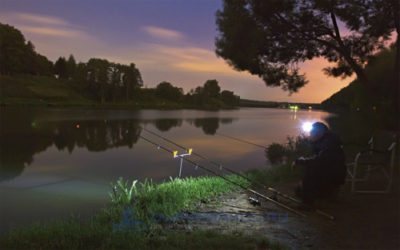
The carp’s favorite places remain sharp changes in depth, the boundaries of vegetation and a clean bottom, as well as snags , but at night carp can swim close to the shore, so you should pay attention to similar places in the coastal zone. Also, in the dark, carp can swim to feed in smaller places - up to 0.5-1 m, especially on quiet, windless nights. In windy weather, as a rule, the carp remains at depth.
It is very important to clear the shore of grass and tree branches in which the fishing line can get tangled when preparing the tackle, casting and landing fish. If the bottom of a reservoir in the coastal zone is abundantly overgrown with algae, it is better to remove them in advance.
You also need to take care of unhindered access to gear , if you plan to spend the night in a tent or vehicle - you need it to be located as close as possible to the gear without obstacles on the way to it. There should also be a “first aid kit” on hand to quickly repair gear in case of a break.
Equipment
Night fishing for carp cannot be done without additional equipment.
In order to prevent the carp from leaving the hook when bringing the fish to the shore, you should prepare a landing net , which should be wide enough so as not to miss in conditions of limited visibility.
Particular attention should be paid to lighting - when fishing for fish, you will definitely need lighting. In this case, it is advisable to have two flashlights, even if you plan to fish alone.
Night is the time when midges are active, so you need to prepare anti-mosquito products , otherwise fishing may remind you of itself for a long time with itchy bites. You should also not forget that at night the temperature can drop significantly, so it would be a good idea to take warm clothes with you .
It would be a good idea to set up a tent in the evening in case of rain. Important! Experienced fishermen advise using a flashlight with a red filter when fishing for carp, while when illuminating the camp, you can use a regular LED one. The red light does not scare the carp, and it behaves more calmly when approaching the shore.
When to catch carp
From the height of my years, I can say that I have been fishing for carp for 17 years now (wow, how time flies quickly, but only recently my father taught me how to hold a fishing rod correctly and 17 years have already passed). The best time of day for carp fishing is morning or evening. BUT it is impossible to say absolutely for sure, since in each individual pond the habits of carp are different. In one lake he takes only in the morning, in another only in the evening. You always need to adapt to the fish's appetites. In general, I wish you all good fishing spots and successful hunting. That's all, I'm waiting for your comments on this article on dvapodvoha.ru. and don’t forget to visit us more often, bye and see you all.
Finally, I offer you an excellent video about how you can catch carp in a very original way.
What gear to fish with at night
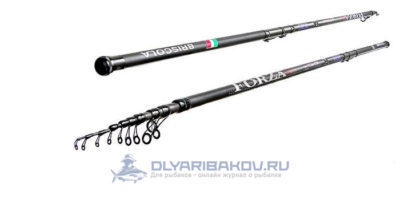
The following gear is best suited for catching carp and carp at night:
- Feeder . Classic tackle for carp fishing at night.
- Match fishing rod . It is most often used on short casts, since following a small point in the distance is very tiring for the eyes.
- Flying float rod . At night, carp often come close to the shore, but when fishing this way, silence should be strictly observed.
Bite alarms
Of great importance is the correct selection and configuration of bite alarms for night carp fishing . When setting up an electronic bite alarm, you should remember that in the silence of the night a loud sound can frighten the carp. It is also advisable for the light from the alarm to shine on the fishing line to determine whether it is unwinding and at what speed.
For match fishing rods, you can use luminous floats, but their light should also not be bright, especially when fishing in a reservoir with clear water.
Attention! Illuminating the floats with a regular flashlight is highly undesirable, as this will scare away the carp.
How to choose gear for carp
Using a fly rod
Practice shows that even when fishing from shallow depths, there is no need to take a rod longer than 8 m, since the equipment for night fishing is much heavier than that used during the day.
This is due to the fact that massive and heavy nozzles are usually used, and a firefly is mounted on the float. To install a firefly, a relatively large float is required. Heavy rigging can overload a light rod.
Using powerful long rods with a significant safety margin is very tiring. The equipment usually includes a float with a carrying capacity of 1.5-2 g, since fishing has to be done in relatively shallow places with a depth of up to 2 m.
A “firefly” with a diameter of 3 mm is attached to the float antenna using a piece of cambric (Fig. 1).
Below the float, a main sinker, a catch and a hook are installed on the fishing line (Fig. 2).
Carp of any weight are always fighters and, after hooking, offer more fierce resistance than during the day. His first jerk is especially powerful and sharp.
To catch carp in shallow water, you can use a fly rod 7-8 meters long or a lap rod 5-6 meters long. Fishing rods should be durable and preferably lightweight so that fishing can be done easily. Carp may not give up for 30 minutes or more. Therefore, it is better to use a carbon fiber or graphite fishing rod.
On a Bolognese fishing rod we install a small but powerful reel with a spool size of 2500-3000 with a front drag. We use fishing line on both the fly and the lap dog with a cross-section of 0.25 mm with a breaking load of 6-8 kg. Here we are already looking at what specimens are found in this body of water. Sometimes it makes sense to use a thicker dark-colored fishing line with a diameter of 0.3 mm.
Groundbait and bait
The bait mixture for carp is made from the same ingredients as in the daytime - for example, a base of corn flour, breadcrumbs, cake, bran, oatmeal, semolina in various proportions, to which flavorings are added - honey, garlic, anise oil and others.
But some difficulties may arise with the delivery of bait to the place of casting, since in the dark it is quite difficult to throw bait balls exactly into the place of the previous bait. Therefore, it is recommended to deliver complementary foods using a radio-controlled boat or slingshot.
Reference! Since in the silence of the night the sound of throwing bait can frighten the fish, it is recommended to make the starting bait before dark, and throw the rest of the bait after when the bite subsides.
As for baits, in hot weather in summer the carp prefers plant baits. Canned corn, peas, pearl barley or steamed corn work well. Boilies give excellent results - and for night carp fishing, it is not the color of the bait that is decisive, but its smell. When fishing with animal baits, which are more relevant as cold weather approaches, preference should be given to those that are present in the natural diet of carp in a given body of water - these are bloodworms, leeches, crustaceans, and worms.
- Bait for carp and carp
- How to prepare bait for carp with your own hands
Baits and baits
With the arrival of summer, carp's tastes change; it begins to show great interest in rich baits of plant origin, such as pearl barley, peas, corn, potatoes, dough, bread crumb or crust. But he also does not forget about protein food, he willingly takes on dung worms and crawlers, and can peck on maggots. To make the bait more attractive, carp anglers use little tricks. For example, soak peas in water with diluted honey or treat bread with garlic juice. Carp really like the pungent smell of garlic. You can even flavor worms with garlic if you throw a couple of crushed cloves into a jar. Within a day, the bait will become saturated with a specific smell.
Boilies are considered an effective bait for carp fishing in summer. It has a complex composition, including amino acids, proteins, various flavors and other additives. Many avid carp fishermen have learned to make boilies themselves, at home. If you don’t have the desire or time to bother with preparing boilies, you can purchase them at any fishing store. Today, this popular carp bait simply surprises with its diversity. Boilies differ in composition, taste, size, structure and other characteristics. There are even dusty ones.

Night fishing tactics and techniques
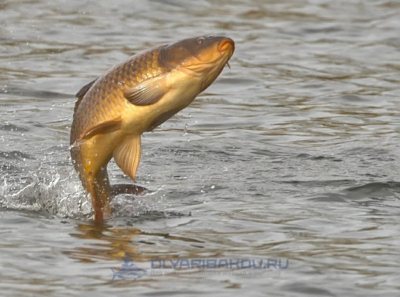
On the first cast, you need to leave a mark on the fishing line with a waterproof marker or marking thread, so that during subsequent recasts you will get to the baited area.
When preparing the site and starting feeding the carp, it is recommended to measure this distance , and then drive two pegs near the fishing site at a distance of a meter from each other. In the event of a gear break, this will help to quickly restore the marker to the required place after the gear is restored.
After hooking, you should, if possible, immediately move the carp away from other abandoned gear, since unraveling the gear in the dark can completely disrupt the entire fishing trip. When fishing, you should focus not on the fishing line, but on the tip of the rod - it will more accurately indicate the location of the carp.
Adviсe
- It is best to go night fishing in a group of two or more people, since assistance is often required in the dark, especially when landing trophy carp.
- Carp is a very cautious fish, so smokers should cover the light with a match or lighter.
- It is not recommended to use a flashlight again, not only for the reason that you can scare the carp - after the bright light, the eyes will get used to the darkness for a very long time.
- Even in moonlight, you should take care of visual camouflage - the silhouette of a fisherman above the water may not go unnoticed by the carp.
- Bait and bait for carp should be located in places inaccessible to rodents, which are much more active at night.
